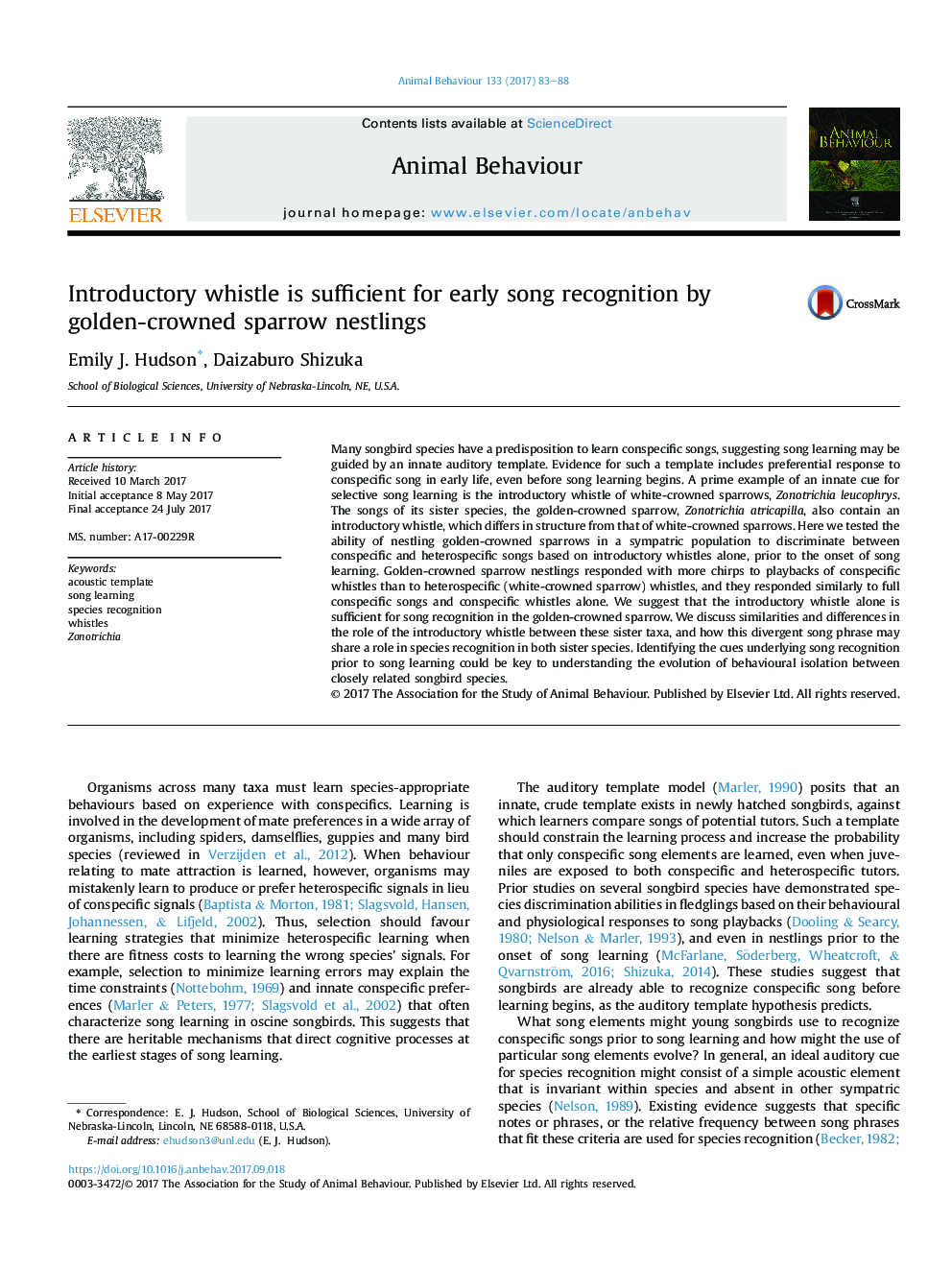| کد مقاله | کد نشریه | سال انتشار | مقاله انگلیسی | نسخه تمام متن |
|---|---|---|---|---|
| 5538314 | 1552195 | 2017 | 6 صفحه PDF | دانلود رایگان |
عنوان انگلیسی مقاله ISI
Introductory whistle is sufficient for early song recognition by golden-crowned sparrow nestlings
ترجمه فارسی عنوان
سوت مقدماتی برای شناخت زودهنگام آهنگ از طوطی های طلایی تاشو کافی است
دانلود مقاله + سفارش ترجمه
دانلود مقاله ISI انگلیسی
رایگان برای ایرانیان
موضوعات مرتبط
علوم زیستی و بیوفناوری
علوم کشاورزی و بیولوژیک
علوم دامی و جانورشناسی
چکیده انگلیسی
Many songbird species have a predisposition to learn conspecific songs, suggesting song learning may be guided by an innate auditory template. Evidence for such a template includes preferential response to conspecific song in early life, even before song learning begins. A prime example of an innate cue for selective song learning is the introductory whistle of white-crowned sparrows, Zonotrichia leucophrys. The songs of its sister species, the golden-crowned sparrow, Zonotrichia atricapilla, also contain an introductory whistle, which differs in structure from that of white-crowned sparrows. Here we tested the ability of nestling golden-crowned sparrows in a sympatric population to discriminate between conspecific and heterospecific songs based on introductory whistles alone, prior to the onset of song learning. Golden-crowned sparrow nestlings responded with more chirps to playbacks of conspecific whistles than to heterospecific (white-crowned sparrow) whistles, and they responded similarly to full conspecific songs and conspecific whistles alone. We suggest that the introductory whistle alone is sufficient for song recognition in the golden-crowned sparrow. We discuss similarities and differences in the role of the introductory whistle between these sister taxa, and how this divergent song phrase may share a role in species recognition in both sister species. Identifying the cues underlying song recognition prior to song learning could be key to understanding the evolution of behavioural isolation between closely related songbird species.
ناشر
Database: Elsevier - ScienceDirect (ساینس دایرکت)
Journal: Animal Behaviour - Volume 133, November 2017, Pages 83-88
Journal: Animal Behaviour - Volume 133, November 2017, Pages 83-88
نویسندگان
Emily J. Hudson, Daizaburo Shizuka,
